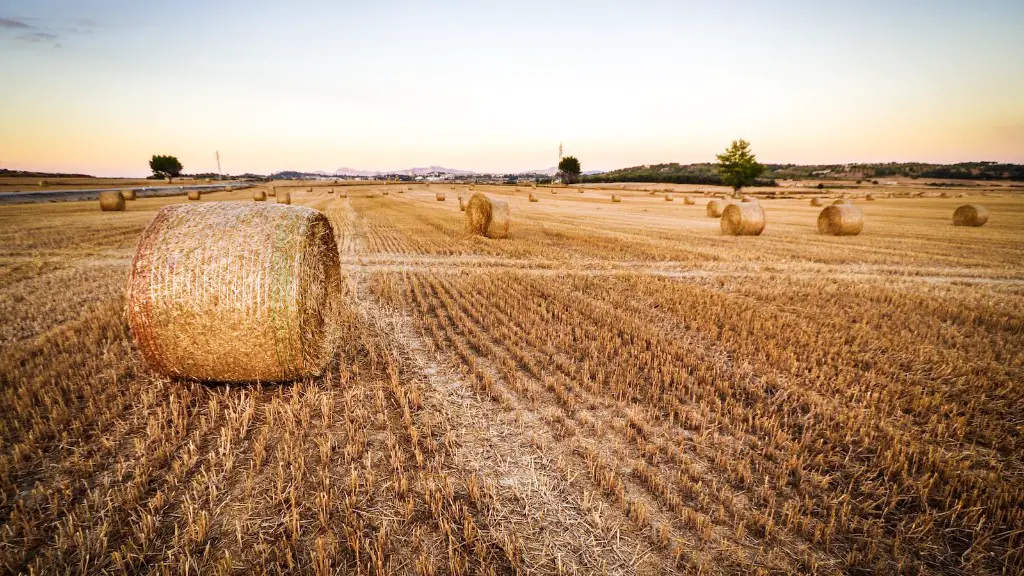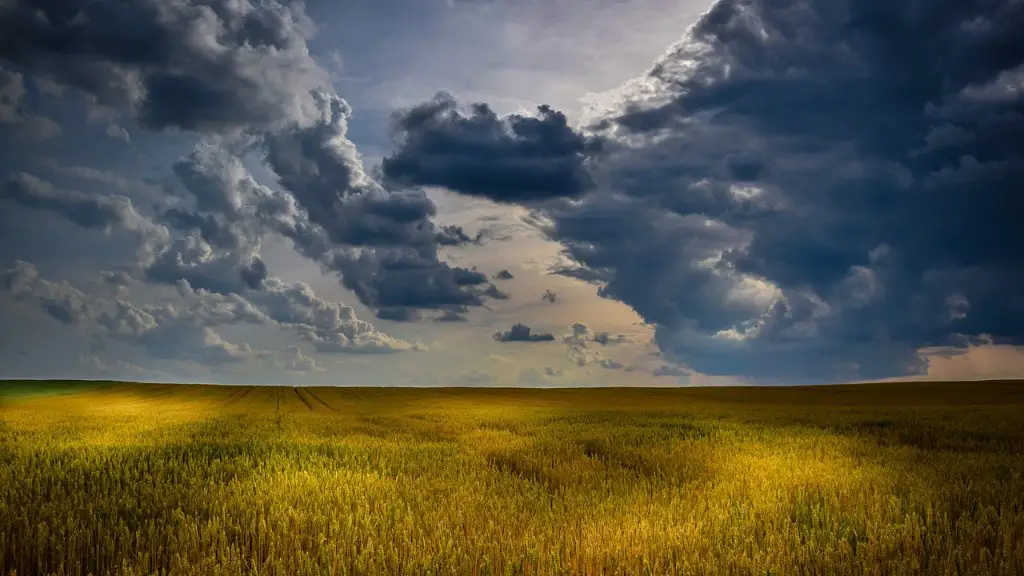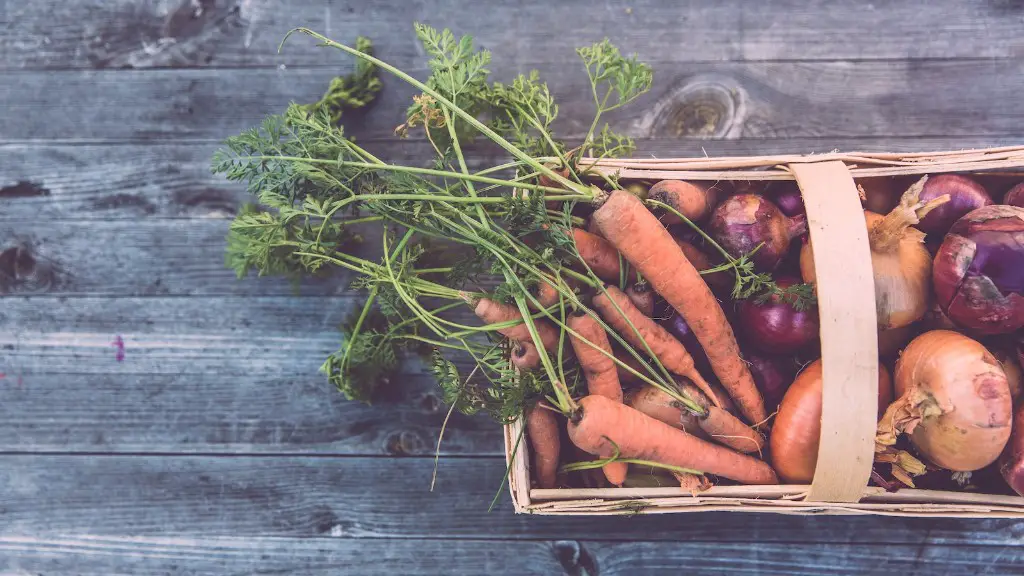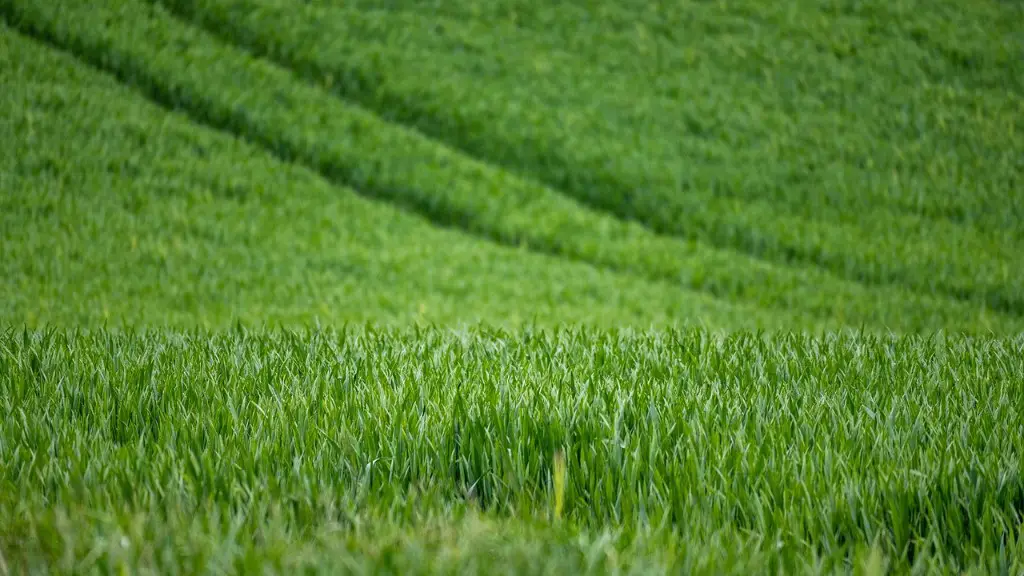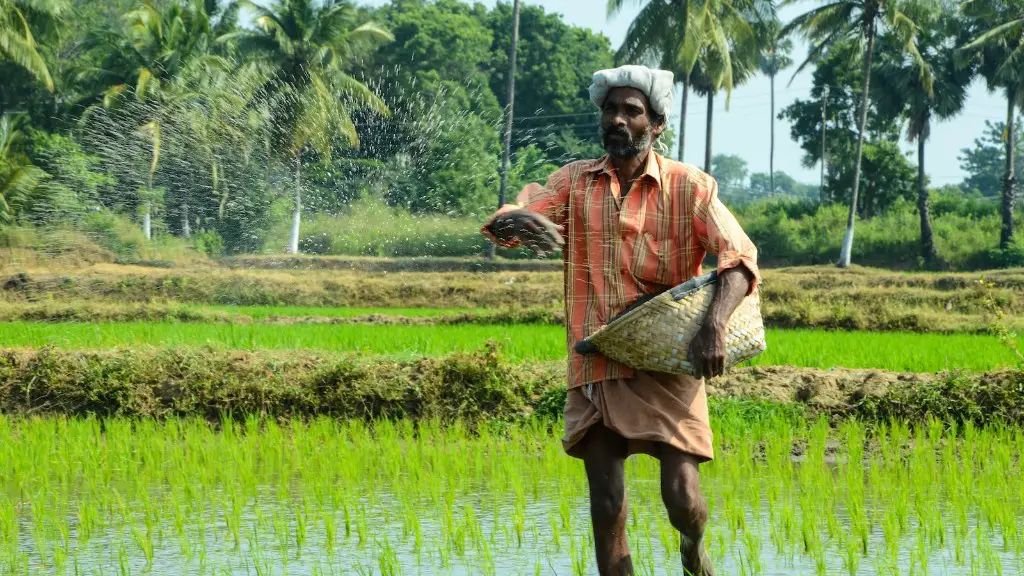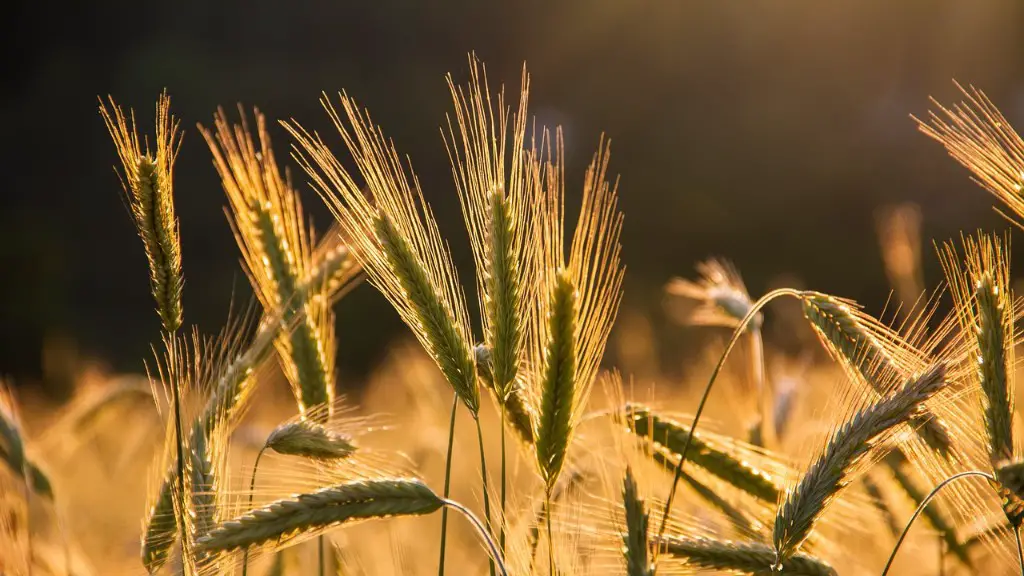Agriculture is all about producing food, fiber and other goods by farming. It encompasses everything from planting and harvesting crops to raising livestock. Agriculture is a vital part of most cultures and has been around for millennia. Today, it continues to be an important part of the global economy.
Agriculture is the art and science of cultivating the soil, growing crops, and raising livestock. It includes the production of crops, the raising of livestock, and the management of natural resources.
What is agriculture mainly about?
Agriculture is the primary source of food and goods for the majority of the world’s population. It is thought to have been first practiced around 13,000 years ago, and widely established for only 7,000 years. Agriculture involves the cultivation of plants and animals for food, fiber, and other products. The products of agriculture are essential to the diets of people all over the world. Agriculture also provides many other benefits, including economic development, environmental protection, and social stability.
Agriculture is vital to the world economy – it is the single largest employer in the world. There are 914 million acres of farmland just in the US, and the average US farmer can feed 155 people. Beef farming accounts for 29% of American farms, and the US is the world’s largest producer of soybeans.
What are 4 needed skills in agriculture
Farmers must be able to identify and solve problems quickly and efficiently in order to maintain a successful and productive farm. They must also be able to effectively communicate and manage interpersonal relationships with employees, customers and other farmers. Furthermore, farm management skills are essential in order to properly plan, organize and operate a farm.
The importance of agriculture cannot be understated. It is the foundation of all civilizations, and has been a critical part of human society for millennia. Agriculture is responsible for the food we eat, the clothes we wear, and the shelter we live in. It is also a key driver of economic growth and development.
Despite its importance, agriculture is often overlooked and undervalued. This is especially true in developed countries, where the majority of the population does not work in agriculture. This can lead to a lack of understanding of the sector and its challenges. It can also make it difficult for those working in agriculture to get the support and investment they need to be successful.
There are a number of reasons why agriculture is important. First, it is essential for food security. Agriculture is the main source of food for the world’s population. Without adequate food production, people would go hungry. Second, agriculture is a major source of livelihoods. In many developing countries, the majority of the population works in agriculture. Agriculture provides employment for people who might not otherwise have jobs.
Third, agriculture is crucial for economic development. The agriculture sector is a major contributor to GDP in many countries. It is also an important source of export earnings. Agricultural products
Why do we study agriculture?
Studying agriculture at a degree level is a great way to learn about different aspects of food production and sustainability. You will gain a combination of skills and knowledge in farming practice, environmental management, food production, and more. This subject is unique in that it combines several disciplines such as science, economics, and business for a multifaceted approach.
Different types of farming are practiced in different parts of the world, depending on the climate, soil type, and availability of water. The main types of farming are:
Dairy Farming: This type of farming is involved in the production of milk and other dairy products. It is mostly done in areas with a temperate climate and rich grasslands.
Commercial Farming: This type of farming is done on a large scale and is mostly focused on the production of crops for sale. It is practiced in many parts of the world, including the United States, Europe, and Asia.
Plantation Farming: This type of farming is done on large estates, usually in tropical or subtropical regions. It is focused on the production of cash crops, such as coffee, cocoa, and sugarcane.
Commercial Grain Farming: This type of farming is done on a large scale and is focused on the production of grains, such as wheat, corn, and rice. It is practiced in many parts of the world, including the United States, Europe, and Asia.
Commercial Mixed Farming: This type of farming is done on a large scale and involves the production of both crops and livestock. It is practiced in many parts of the world
What are some examples of agriculture?
Crops are agricultural products that are grown, harvested, or collected. They can include wheat, cotton, fruit, honey, and dairy cows. Farmers are people who earn a living by farming, and they can either manage or operate a farm.
The basic needs for human survival; food, shelter, and clothing, are all dependent on agriculture for their production. Raw materials such as crops for food, silk for cloth, and wood for shelter, all come from agriculture. Agriculture is essential to human survival and our way of life.
What is the best career in agriculture
There are many different types of careers in agriculture, from engineering and economics to farm management and science. The field of agriculture is constantly evolving, so there are many opportunities for those interested in pursuing a career in this industry. Here are some of the top careers in agriculture:
Agricultural Engineer: Agricultural engineers work on the design and development of agricultural machinery and equipment. They also work on irrigation and drainage systems, and on the construction of agricultural buildings.
Agricultural Economist: Agricultural economists study the economic factors that affect the agriculture industry. They may work in the government, in private industry, or for educational institutions.
Farm Manager: Farm managers are responsible for the day-to-day operations of a farm. They oversee crop production, animal husbandry, and farm workers.
Soil and Plant Scientist: Soil and plant scientists conduct research on the physical and chemical properties of soils and plants. They work to improve the productivity of crops and to develop new and improved varieties of plants.
Conservation Planner: Conservation planners work with land owners and managers to develop plans for the conservation of natural resources. They may also work on environmental impact studies and develop land management strategies.
Commercial Horticulturalist: Commercial hort
There are many high paying jobs in agriculture, but some of the most common and highest paying ones include agricultural engineers, agronomists, agricultural food scientists, veterinarians, and winemakers. Agricultural engineers typically design and oversee the construction of agricultural machinery and equipment, while agronomists focus on the science and art of crop production. Agricultural food scientists conduct research to improve the quality and safety of food products, and veterinarians provide care for sick and injured animals. Winemakers supervise the production of wine, and farm managers are responsible for the overall operations of a farm. Agricultural sales representative is another high paying job in agriculture, where individuals sell agricultural products and services to farmers and other customers.
What are 2 major problems that farmers are faced with?
Water, labor, and shipping problems are the biggest challenges farmers face. They cannot control these factors and must adapt their practices to accommodate them. This can be difficult and may lead to decreased crop yields and decreased profitability.
Agriculture is essential for both food production and other raw materials. The land is a key resource for agriculture, and rural or developing areas have plenty of it. By producing food and other materials, agriculture plays a vital role in supporting populations both in rural and urban areas.
What are the two main types of agriculture
Farming can be classified into two main types – subsistence farming and commercial farming. Depending upon the geographical conditions, demand of produce, labour and level of technology, farming can be classified into these two types.
Subsistence farming is carried out mainly for the purpose of self-sufficiency. The farmers produce only enough food for themselves and their families. They do not have any surplus produce to sell in the market. This type of farming is prevalent in regions with poor geographical conditions and scarce resources.
Commercial farming is carried out with the main objective of earning profits by selling the produce in the market. The farmers produce surplus crops and livestock which they sell in the market. This type of farming is prevalent in regions with good geographical conditions and abundant resources.
Intensive subsistence agriculture is the most abundant type of agriculture around the world, and is highly dependent on animal power. It is commonly practiced in the humid, tropical regions of the world, where the climate and soils are well-suited for this type of agriculture. This type of agriculture is very labor-intensive, as the farmer must clear the land, plant the crops, and care for them throughout the growing season.Animal power is essential for this type of agriculture, as it is used for tasks such as plowing the fields, transporting crops, and threshing grain. This type of agriculture is often the only option for farmers in these regions, as the climate and soils are not well-suited for other types of agriculture.
What do you do in agriculture?
Agricultural workers typically spend their days performing a variety of tasks related to crop cultivation. This may include planting seeds, inspecting crops for signs of pests or disease, and harvesting the crop when it is ready. Workers may also be responsible for operating and maintaining farm equipment, as well as applying fertilizer or pesticide solutions to control pests and weeds.
Agronomy, Crop, Horticulture, Soil, Economics, Pasture, and Animal Sciences are all vast and complex topics. When it comes to learning about these topics, it appears that there is a greater focus on the science behind them than on the actual production. This is likely due to the fact that these topics are so complex and there is a lot of ground to cover. However, it is important to remember that the practical applications of these concepts are just as important as the theoretical knowledge.
Is agriculture a good major
If you’re wonder if agriculture is a good field to study, the answer is yes! Pursuing a degree in agriculture can help you land a job in the field, and open up other opportunities in the industry.
Crop production (arable farming) includes growing of the following branches of agriculture: livestock production, crop production, agricultural economics, agricultural engineering.
Final Words
Agriculture is the art, science, and business of producing crops or livestock. Agriculture is all about producing food, fiber, and other plant and animal products.
Agriculture is all about producing food and other crops. It involves tilling the soil, planting seeds, and watering and fertilizing the plants. Farmers also need to protect their crops from pests and diseases. Harvesting the crops is the final step in the process.
